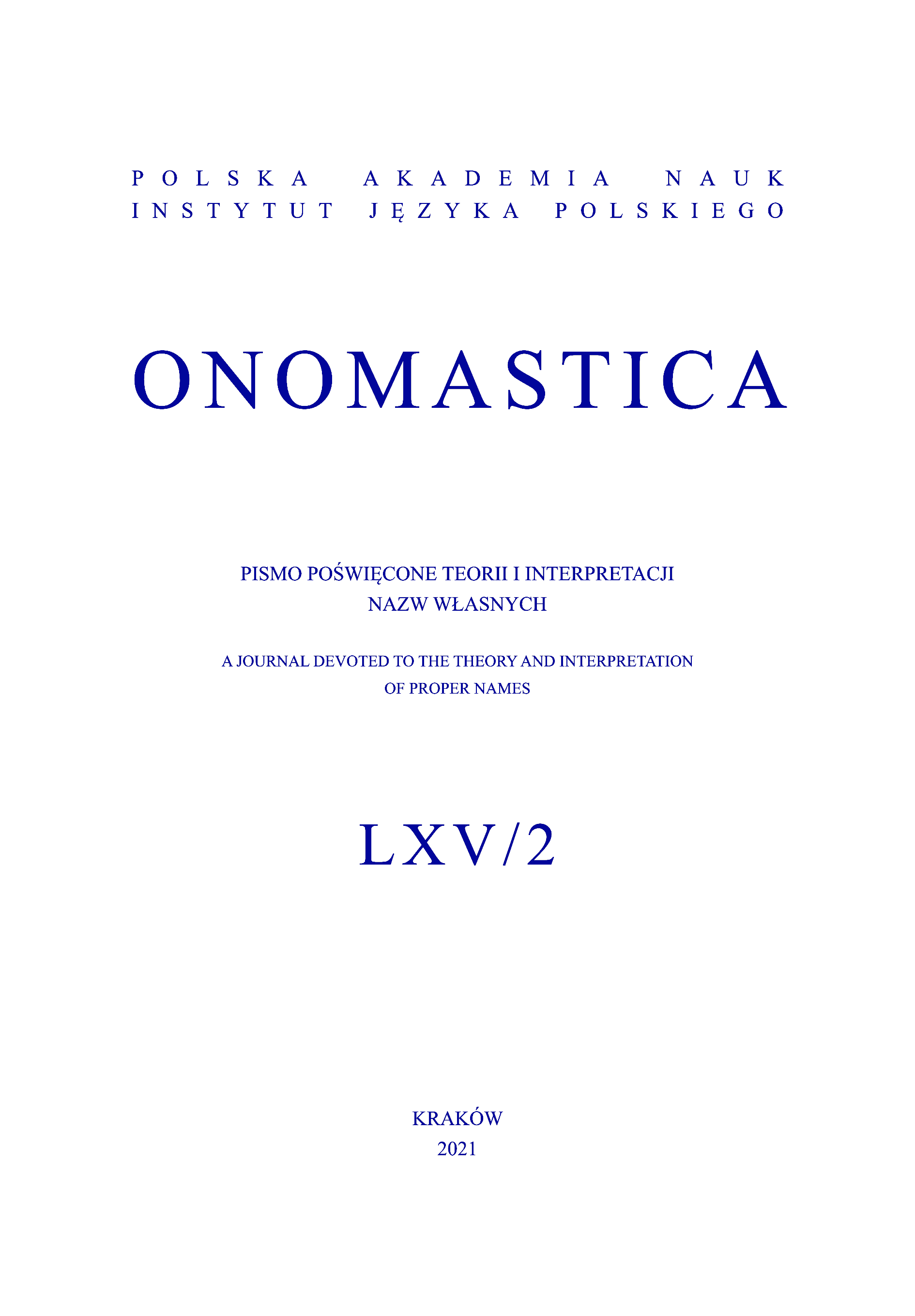Abstract
The global textile industry has a significant environmental impact since the current system for producing, distributing and using clothing exhausts natural resources. However, while there has been a growing awareness of negative environmental impacts among customers, more and more clothing companies have aligned themselves with the principles of sustainability. This paper investigates whether and how clothing companies express the notion of environmental sustainability in their names. The data consist of 114 company and brand names in the sustainable Finnish textile industry, supplemented with information taken from the webpages of these companies. The analysis focuses on the semantic features of the names, and it is based on a cognitive-discursive view and metaphor theory. The choice of language has been examined as part of name semantics.
Many companies have written the story behind the brand name on their website. Names can convey direct notions of sustainability and circular economy (Pure Waste, Relove, Upcycler). Names that consist of words referring to nature (Cocoon house, Weekendbee) have an indirect relation to corporate sustainability. Some names consist of a personal name, which underlines the responsibility of the brand, or a place name, which may highlight locality. Valuing local production is also behind the choice of Finnish as the language of the name.
References
Ainiala, T., Saarelma, M., & Sjöblom, P. (2012). Names in Focus. An Introduction to Finnish Onomastics. Helsinki: Finnish Literature Society.
Barthes, R. (1975). An introduction to the structural analysis of narrative. New Literary History, 6(2), 237‒272.
Bergien, A. (2008). Global and regional considerations in the formation of company names. In Atti del XXII Congresso Internazionale di Scienze Onomastiche (Vol. II, pp. 289‒297). Pisa: Edizioni Ets.
CICAT2025. Circular Economy Catalysts: From Innovation to Business Ecosystems. Turku University of Applied Sciences. https://cicat2025.turkuamk.fi/en/
EMF 2017 = A New Textiles Economy: Redesigning Fashion’s Future. Ellen MacArthur Foundation. http://www.ellenmacarthurfoundation.org/publications
EU 2020 = A New Circular Economy Action Plan. For a cleaner and more competitive Europe. Communication from the Commission to the European Parliament, the Council, the European Economic and Social Committee and the Committee of the Regions. Brussels: European Commission, 11.3.2020. https://eur-lex.europa.eu/legal-content/EN/TXT/?qid=1583933814386&uri=COM:2020:98:FIN
Evans, V., & Green, M. (2006). Cognitive Linguistics: An introduction. Edinburgh: Edinburgh University Press. ProQuest Ebook Central. FINIX = List of sustainable textile companies in Finland. https://finix.aalto.fi/kestavavaate-kampanja/ (25.02.2021).
Finnish Government (2019). Inclusive and Competent Finland — a Socially, Economically and Ecologically Sustainable Society. Publications of the Finnish Government 2019: 25. https://julkaisut.valtioneuvosto.fi/handle/10024/161664
Hakala, U., Sjöblom, P., & Kantola, S.P. (2015). Toponyms as carriers of heritage: implications for place branding. Journal of Product & Brand Management, 24(3), 263‒275. https://dx.doi.org/10.1108/JPBM-05-2014-0612
Lakoff, G., & Johnson, M. (1980). Metaphors We Live By. Chicago: University Press.
Langacker, R.W. (1987). Foundations of Cognitive Grammar (Vol. I). Stanford: Stanford University Press.
Lowry, E. (2016). Eponymous elixirs: Mrs. Pinkham, nineteenth-century patent medicines, and the rhetoric of naming. In S. M. Vanguri (Ed.), Rhetorics of Names and Naming. Routledge Studies in Rhetoric and Communication, 28 (pp. 170‒181). New York–London: Routledge.
Lundqvist, A., Liljander, V., Gummerus, J., & van Riel, A. (2013). The impact of storytelling on the consumer brand experience: The case of a firmoriginated story. Journal of Brand Management, 4(4), 283‒297.
Mattfolk, L. (2017). Attitudes towards globalized company names. In T. Ainiala, & J.O. Östman (Eds.), Socio-onomastics: The pragmatics of names (pp. 165‒181). Amsterdam: John Benjamins Publishing Company.
Montes Fernández, A. (2008). Marken- und Produktnamen der Glamour-Industrie im sozio-ökonomischen Diskurs. Onoma, 43, 195‒220.
Natahadibrata, N. (2013, November 6). Citarum, Kalimantan world’s most polluted. Jakarta Post. https://www.thejakartapost.com/news/2013/11/06/citarum-kalimantan-world-s-most-polluted.html
Park, C.W., MacInnis, D.J., & Eisingerich, A.B. (2016). Brand Admiration: Building a business people love. Hoboken–New Jersey: John Wiley & Sons.
Peréz Hernández, L. (2011). Cognitive tools for successful branding. Applied Linguistics, 32(4), 369‒388.
Pérez Hernández, L. (2013). A pragmatic-cognitive approach to brand names. A case study of Rioja Wine Brands. Names, 61(1), 33‒46.
Rosteck, T. (1999). Introduction. In T. Rosteck (Ed.), At the Intersection: Cultural studies and rhetorical studies (pp. 1‒24). New York: Guilford.
Šajn, N. (2019). Environmental Impact of the Textile and Clothing Industry. What consumers need to know. Members’ Research Service PE 633.143. European Parlament. https://www.europarl.europa.eu/RegData/etudes/BRIE/2019/633143/EPRS_BRI(2019)633143_EN.pdf
Sax, B. (2006). Storytelling and the ‛Information Overload’. On the Horizon, 14(4), 165‒170.
Sjöblom, P. (2006). A cognitive approach to the semantics of proper names. Onoma, 41, 63‒82.
Sjöblom, P. (2016). Commercial names. In C. Hough (Ed.), The Oxford Handbook of Names and Naming (pp. 453–464). Oxford: Oxford University Press.
Teutsch, A. (2008). Trademarks as indicators of the Zeitgeist. Onoma, 43, 251‒275.
Vanguri, S.M. (2016). Introduction: toward a rhetorical onomastics. In S. M. Vanguri (Ed.), Rhetorics of Names and Naming (pp. 1‒10). New York: Routledge.
Virsu, V. (2012). Sitouttamisretoriikka yritysviestinnässä [Commitment Rhetoric in Corporate Communications]. Turku: University of Turku.
Woodruff, R.B., & Gardial, S.F. (1996). Know your Customer. New Approaches to Understanding Customer Value and Satisfaction. Oxford: Blackwell.
Zilg, A. (2013). «Tu y yo». Aspects of brand names related to interaction and identification. In P. Sjöblom, T. Ainiala, & U. Hakala (Eds.), Names in the Economy. Cultural prospects (pp. 269‒281). Newcastle: Cambridge Scholars.


